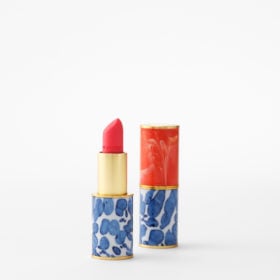
June 22, 2020 at 01:00PM
Flea markets and summer yard sales are on hold. There are no day trips to antique malls, and standbys like Nova Scotia’s stalwart used-clothing store Guy’s Frenchys are temporarily closed. Instead, we’re left to virtually scratch our itch to thrift. Vintage shopping online requires a well-thought-out approach – whether you’re motivated by the thrill of the chase or have a zero-waste-wardrobe goal, here are some tips for taking your treasure hunt virtual.
Know Your Sources
From mainstay platforms like eBay and Etsy to niche sites like Collectors Weekly and Ruby Lane (a great resource for vintage costume jewellery), there are a wealth of ways to seek out previously loved pieces.
Make Time
Patience is a virtue, especially when you’re browsing, and the same commitment is required whether you are thrifting in person or online. Perusing sites regularly won’t replace the IRL serendipity of spotting a gem, but getting into the habit of checking your favourite vendors a few minutes every day or week pays off. Opt into Instagram push notifications from chosen accounts, or create a profile on Etsy and favourite the shops you want to keep an eye on. It’ll almost feel like you’re out at your favourite flea market again.
Keep It Local
ADVERTISEMENT
ADVERTISEMENTKate Spade Autumn/Winter Sale |
Antique show and flea market vendors depend on regional supply and local shoppers. Show them some love! With cancellations of major markets across the country (like the Christie Antique & Vintage Show and the Ottawa Vintage Clothing Show) and more regular seasonal markets (like the Aberfoyle Antique Market in Ontario and Vancouver’s popular biweekly Eastside Flea) on hiatus indefinitely, you’ll find that many of those vendors have become more active online. Consult a show or market’s website for lists of vendors from past events, find them on social media and give them a follow.
Strategize
Know your measurements. Sizing conventions have evolved over time, so what you see on the label is only a guideline. If you have a favourite dress or a pair of trousers that fits you well, lay it flat, measure it at several points (from side seam to side seam with a measuring tape) and keep that info close at hand. For pieces like a men’s blazer, a size 40 jacket will be consistent whether it’s from 1979 or 1999; it’s the silhouette’s trendy fit details that vary.
Educate Yourself
Right now, many institutions with fashion collections—including the museum at New York’s Fashion Institute of Technology and at L.A.’s Fashion Institute of Design & Merchandising, Toronto’s Bata Shoe Museum, London’s Victoria and Albert and, of course, The Metropolitan Museum of Art—have opened up their archives to spotlight fashion and jewellery artifacts. They’re a great opportunity to explore fashion history in depth. Likewise, seller sites like Collectors Weekly regularly post original articles about niche vintage fashion and accessories labels, as do the enthusiastic costume jewellery vendors of Ruby Lane. I recommend following noted collectors, vendors and dealers who blog and are active on social media; even if you’re unlikely to ever buy what they’re selling, their expertise is vast—and free. I subscribe to luxe vintage retailer Shrimpton Couture’s weekly newsletter not only because I love clickable beauty in my inbox every Friday but because owner Cherie Balch shares her meticulous research about every designer piece she sells.
Consult the Runways
As the saying goes, there is nothing new under the sun. Designer interpretations of bygone styles have their origins in vintage, and replicating a look can be easy, fun and often inexpensive. For example, if you love Dries Van Noten’s signature patterned silk coats, seek out 1950s car coats and 1960s toppers that have become separated from their matching dresses. And if you buy a size up on a large-scale houndstooth men’s blazer and use a little ingenuity (and ribbon trim), you can approximate Thom Browne’s boxy oversized coats.
Don’t Play the Name Game
Don’t get hung up on well-known labels. If it was expensive new, it will still be expensive vintage, so skip the Pucci and Gucci and be more creative. There’s generally better value—and often better construction—in garments from long-gone brands and lesser known mainstream clothing labels than in designer wares. You can source these generic and anonymous manufacturers by using search terms (like “A-line dresses”) instead of brand names. So, instead of Pucci, put “quirky retro Hawaiian hostess dresses” and “affordable vintage aloha shirts” on your watch list.
Check the Condition
Avoid listings that are scant on photos, information about fabric content and condition details. Experienced sellers will point out any stains, tears or loose settings and missing stones and disclose whether the item smells. You can’t do a sniff test yourself, so be mindful that even more advanced synthetic fabrics (like 1990s-era polyester) often retain odours. When it comes to accessories, the spring mechanism used in clip-on earrings, brooches and dress clips should be tight. For simulated gemstone and crystal costume jewellery, all stones, prongs and settings should be strong and intact. And if a stone is missing, live with it or give it a pass because you will never ever find an exact match.
The post 8 Tips On How to Distance-Source Your Next Vintage Find appeared first on FASHION Magazine.
Read More Fashion News
Author Nathalie Atkinson | Fashion Magazine
Selected by CWC
ADVERTISEMENT
ADVERTISEMENTUp to 30% off Gift Sets |







